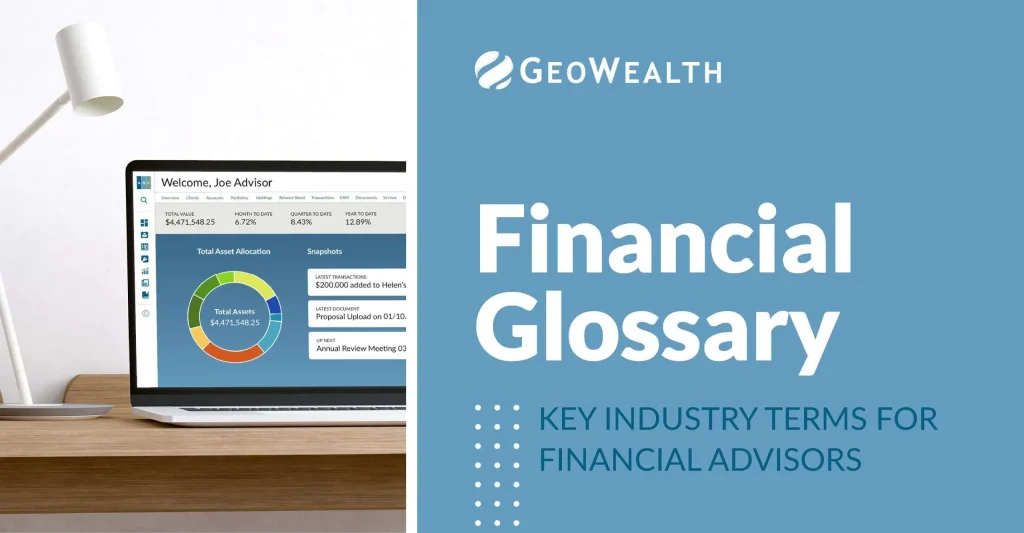Wealth Management Terminology is a crucial aspect of understanding the intricate world of finance and investment, especially for high-net-worth individuals and family offices. As the competition among private banks, registered investment advisors, and boutique wealth management firms intensifies, the language used to describe services can often become muddled with marketing jargon. The recent introduction of the “Wealthesaurus” by the Ultra High Net Worth Institute highlights the importance of clarity within this industry, offering over 80 definitions of commonly misused terms. With accurate wealth management terms, investors can make informed decisions regarding their assets under advisement and avoid the pitfalls of misinterpretation in services rendered. This initiative aims not only to educate but also to establish a standard vocabulary to enhance client communication and protect them from misleading sales tactics.
In the realm of managing affluent portfolios, financial jargon can often create confusion and uncertainty for clients unfamiliar with industry-specific vocabulary. Synonyms such as “wealth management concepts,” “financial advisory terms,” and “investment lexicon” are essential in recognizing the nuances of services provided by wealth advisors. Furthermore, terms like “asset management strategies” and “investment advisory definitions” help to clarify the complex processes that guide financial decision-making for high net worth individuals. With the growing reliance on clear communication practices outlined in resources like the Wealthesaurus, clients gain the confidence needed to navigate this convoluted landscape effectively. Emphasizing the need for a standardized language within the financial sector, these efforts ensure that savvy investors can better comprehend their options and make sound economic choices.
Understanding Wealth Management Terminology
Wealth management terminology can often be a maze for clients, especially for those who may not be financially savvy. Terms like ‘assets under advisement’ and ‘family office jargon’ can mislead even the most discerning investors. The Wealthesaurus, introduced by the Ultra High Net Worth Institute, aims to clarify these frequently used terms within the wealth management industry, paving the way for better client understanding and communication. By providing precise definitions and context for terms used in this sector, the Institute helps demystify the language often seen as exclusive or convoluted.
For instance, many clients might confuse ‘assets under management’ (AUM) with ‘assets under advisement’ (AUA). AUM refers to the total market value of assets that an investment firm manages on behalf of its clients, while AUA pertains to assets that a firm advises on but does not manage directly. This distinction is crucial for high net worth individuals when determining how their wealth is being handled. The Wealthesaurus clarifies these definitions, allowing clients to better navigate their wealth management landscape without being overwhelmed by jargon.
The Importance of Defining ‘Multifamily Office’
The term ‘multifamily office’ has gained traction but is often misused in marketing by various investment firms. Traditionally, a multifamily office serves a limited number of families, providing personalized services akin to a family office. However, some registered investment advisors and advisory firms inaccurately label themselves as multifamily offices to attract high net worth clients, leading to confusion and misinformation. The Wealthesaurus highlights the proper definition and conditions under which a firm can legitimately be called a multifamily office.
For a firm to qualify as a multifamily office, it must meet criteria including serving at least ten complex, multigenerational families, each with a significant net worth. This ensures that the services offered are truly tailored to the unique needs of affluent families looking for comprehensive wealth management. By establishing clear boundaries around the term, the Wealthesaurus works to combat the dilution of this title, supporting clients in identifying genuine multifamily offices versus those simply leveraging the allure of the term without providing the requisite depth of service.
Clarifying ‘Assets Under Advisement’ — Key for Wealth Clients
The nuanced term ‘assets under advisement’ (AUA) often features prominently in the wealth management vernacular, yet its interpretation can vary significantly from firm to firm. Clients need to understand how different firms utilize this term, as it can affect their perception of a firm’s capability and credibility. According to the Wealthesaurus, AUA is about fiduciary responsibility to clients, which encompasses a range of services provided to monitor and advise on various asset classes even if the firm does not manage them outright.
Misunderstandings arise when firms combine AUA with assets under management (AUM) in their reports, which might inflate the numbers and paint an unrealistic picture of their capabilities. This discrepancy underscores the necessity for clients to ask specific questions when engaging with wealth managers, particularly regarding how they categorize their assets. The insights provided by the Wealthesaurus aim to establish a common language around these terms, allowing for transparent communication between clients and advisors, ultimately empowering clients to make informed decisions about their wealth.
Navigating the Complex Landscape of Wealth Management
The wealth management industry can be likened to a complex web where various terms are intertwined, creating confusion for ultra-high-net-worth individuals seeking clarity in their financial decisions. Many terms, including those related to family office services and investment strategies, are often used interchangeably, which can mislead clients. The introduction of the Wealthesaurus serves as a crucial tool in puncturing the layers of ambiguity surrounding these commonly used concepts, fostering a clearer dialogue between advisors and those they serve.
With the industry’s reliance on technical jargon, clients may feel overwhelmed and hesitate to ask questions, which ultimately hampers their decision-making process. The Wealthesaurus, by continuously updating its content and soliciting feedback from users, aims to reflect the latest shifts in terminology and provide accessible definitions. This ongoing collaboration positions it as a living resource that adapts to the evolving landscape of wealth management, ensuring clients are not left navigating this intricate environment alone.
The Role of Wealthesaurus in Promoting Industry Standards
The Wealthesaurus was developed not only to assist clients in understanding wealth management terminology but also to promote consistency and best practices within the industry. By standardizing terminology, the Institute sets a foundation upon which wealth management firms can build their client communications. This shift towards a common language reduces marketing exaggeration and ensures that clients receive clear, honest descriptions of services offered to them.
Jim Grubman, a thought leader in the field, emphasizes the importance of adopting standardized terms to minimize confusion in a landscape filled with misconceptions. The Wealthesaurus serves as a reference point for wealth managers, encouraging them to align their definitions with accepted standards. As such, this lexicon not only aids clients but also elevates the overall professionalism within the wealth management sector, reinforcing trust and transparency between advisors and their clients.
Fostering Clarity through Collaboration and Feedback
The Wealthesaurus stands out in its approach of engaging with both wealth management professionals and clients to refine its entries continually. The crowdsourced model allows for the inclusion of diverse perspectives, thus creating a more comprehensive and widely accepted lexicon of wealth management terms. This collaborative effort is critical in a field where definitions can become muddied and misinterpreted.
Clients play a vital role in shaping the content of the Wealthesaurus by providing feedback on which terms they find confusing or misleading. This real-time input ensures that the resource remains relevant and attuned to the needs of its users. By nurturing this relationship, the Wealthesaurus not only establishes authority within the wealth management community but also empowers clients to take an active role in their financial education.
Mitigating Marketing Overreach in Wealth Management
As the wealth management space becomes increasingly competitive, marketing strategies can sometimes lead to the misuse of terms. With firms desperate to capture the attention of ultra-high-net-worth individuals, marketing jargon can become inflated, causing clients to question the authenticity of the services being touted. The Wealthesaurus helps to cut through the noise by providing clear definitions that expose deceptive marketing claims.
The push for clarity in terminology stems from the necessity of maintaining the integrity of wealth management services. Wealth managers can leverage the Wealthesaurus not only as a client-facing resource but also as an internal guide to ensure they communicate accurately and effectively. By adhering to standardized definitions of wealth management terms, firms can foster a culture of trust and reliability in their communications, ensuring clients feel confident in their financial engagements.
Understanding the Ultra High Net Worth Landscape
The term ‘ultra high net worth’ is often used without a precise understanding of its implications. Generally, it refers to individuals with a net worth exceeding $30 million. However, as wealth dynamics shift and inflation affects asset valuations, many firms are re-evaluating what constitutes ultra high net worth. As outlined by the Wealthesaurus, some definitions are evolving towards a threshold of $100 million, reflecting the growing exclusivity of this group.
This transformation in classification has significant ramifications for wealth management practices. Firms that specialize in serving ultra high net worth clients must adjust their strategies and tailor their service offerings accordingly. By recognizing and articulating these definitions, the Wealthesaurus enables both clients and advisors to gain a better understanding of the evolving ultra high net worth landscape, fostering more nuanced conversations around wealth strategies and opportunities.
The Challenge of Defining Wealth Management Products
Wealth management encompasses a vast range of products and services, which can easily lead to confusion among clients. Terms specific to investment vehicles, like GRATS or SMAs, often lack clear definitions or are too technical for the average investor. The Wealthesaurus aims to focus on essential terms that significantly impact the client-advisor relationship while avoiding overly technical jargon that clients can easily look up online.
This strategic selection of terms encourages advisors to communicate more effectively and responsibly. By omitting complex products from its lexicon, the Wealthesaurus reinforces the importance of clarity in defining wealth management services that materially impact clients. The goal is to foster a space where clients feel informed and safe when seeking advice about their wealth management strategies.
Encouraging Responsible Use of Wealth Terminology
As the wealth management industry evolves, the responsible use of terminology becomes imperative. Misleading terms and exaggerated language can detract from client trust and satisfaction. The Wealthesaurus addresses this challenge by highlighting responsible language practices and offering guidance on how to communicate effectively with clients.
By setting a standard for the appropriate use of wealth management terminology, the Wealthesaurus encourages firms to prioritize client education and transparent communication. This is especially crucial in an era where clients are increasingly scrutinizing their advisors’ claims and demanding clear explanations of services and terminology. Firms that embrace these standards will likely see improved client relationships and trust as a result.
Frequently Asked Questions
What are common wealth management terms that clients should know?
Understanding key wealth management terms is vital for clients navigating the affluent landscape. Some essential terms include ‘assets under management (AUM)’, which refers to total client assets managed by a firm, and ‘assets under advisement (AUA)’, indicating assets for which a firm provides advisory services without direct management. It’s crucial for clients to familiarize themselves with the Wealthesaurus from the Ultra High Net Worth Institute, as it clarifies over 80 commonly misused wealth management terminologies.
How does the Wealthesaurus help clarify wealth management terminology?
The Wealthesaurus serves as a valuable resource for wealthy individuals and family offices, offering clear definitions of terms that are often misunderstood or misapplied in the wealth management sector. By compiling a crowdsourced lexicon of wealth management terms, the Wealthesaurus aims to eliminate marketing confusion and improve communication standards, aiding clients in their decision-making process.
What is the difference between assets under advisement (AUA) and assets under management (AUM)?
While both terms relate to the financial assets a firm handles, ‘assets under advisement (AUA)’ denotes assets for which advisory services are provided without direct management, whereas ‘assets under management (AUM)’ refers to assets the firm actively manages. Clients should clarify how firms calculate these metrics to ensure transparency in their wealth management services.
What services should a genuine family office offer?
A genuine family office typically provides a range of tailored services to high net worth families, including investment management, estate planning, and tax strategy. According to the Wealthesaurus, to qualify as a multifamily office, firms must serve at least ten complex, multigenerational families with a median net worth of $30 million, ensuring that clients receive personalized and conflict-free service.
Why is the term ‘multifamily office’ controversial in wealth management?
The term ‘multifamily office’ is contentious because it is often misused by various financial firms, misleading clients about the exclusivity and comprehensive service associated with traditional family offices. According to the Wealthesaurus, such offices must adhere to strict criteria, including specific service offerings and client demographics, yet many firms label themselves as multifunctional without meeting these qualifications.
How can clients effectively use the Wealthesaurus to navigate wealth management discussions?
Clients can leverage the Wealthesaurus by familiarizing themselves with the defined wealth management terms before engaging with advisors or firms. By understanding terminology like ‘high net worth’ and ‘multifamily office’, clients can ask informed questions and seek clarification on services, ensuring they receive the best possible wealth management advice.
What does ‘high net worth’ encompass in the wealth management world?
In wealth management, ‘high net worth’ typically refers to individuals with a net worth between $1 million and $30 million, while ‘ultra high net worth’ pertains to those possessing over $30 million. The Wealthesaurus emphasizes that these definitions evolve, especially with increasing global wealth and inflation, prompting some firms to consider clients with over $100 million as ultra high net worth.
Why is accurate terminology important in wealth management?
Accurate terminology in wealth management is crucial as it enhances client understanding, builds trust, and aids in effective decision-making. Misleading or improperly used terms can lead to confusion, inflated expectations, and potential financial missteps. The Wealthesaurus aims to standardize these terms, providing clear definitions and reducing the marketing jargon prevalent in the industry.
| Term | Definition | Usage Issues |
|---|---|---|
| Wealthesaurus | A reference compilation of over 80 wealth management terms | Designed to clarify misused terms in the industry. |
| Multifamily Office | A single family office serving multiple external families. | Misused by many firms claiming this title without meeting defined criteria. |
| Assets Under Advisement (AUA) | Refers to assets for which a firm offers fiduciary advice. | Often conflated with assets under management (AUM) which leads to confusion. |
Summary
Wealth management terminology is essential for understanding the complex financial landscape faced by affluent individuals and families. The introduction of the Wealthesaurus by the Ultra High Net Worth Institute aims to demystify over 80 key terms commonly misused within the wealth management sector, enhancing communication between clients and advisors. This initiative addresses the rampant confusion caused by improper labeling and vague definitions, ultimately striving for clarity in an increasingly competitive environment for ultra-wealthy investors.



